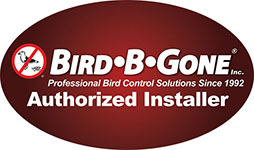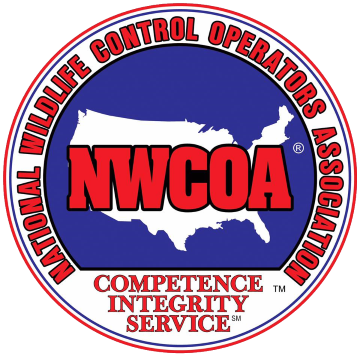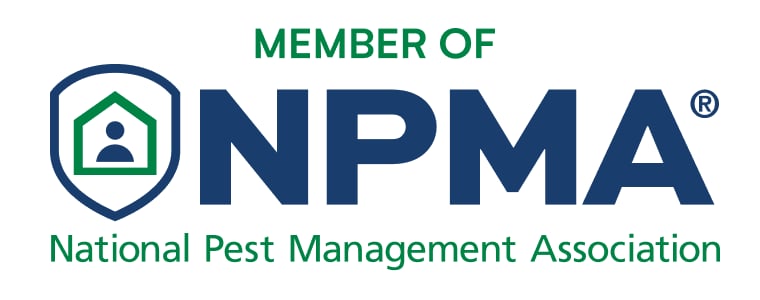
How to Tell if There Are Raccoons in Your Attic
Alright, let’s get down to business. How can you be sure that it’s raccoons turning your attic into their personal playground? Here are some dead giveaways:
Visible Entry Points– First things first, take a good look around your home, especially near the roofline. Raccoons are crafty little invaders and can squeeze through surprisingly small openings. Look for damaged soffits, vents, and eaves. Any signs of prying or gnawing? That’s a raccoon’s calling card.
Raccoon Tracks– Ever feel like a detective in your own home? Well, now’s your chance! Raccoons leave behind distinct hand-like prints. You might find these tracks around the attic or near potential entry points. Their little footprints are a clear sign they’ve been roaming around.
Grease Marks– Raccoons are a bit like furry ninjas—they squeeze through tight spots and leave greasy marks from their fur. Check around any small openings or tight spaces where they might be getting in. If you spot greasy smudges, it’s likely you’ve got raccoons.
Nesting Materials– If you start seeing insulation, cardboard, or other materials scattered around your attic, that’s another big hint. Raccoons love to make cozy nests out of whatever they can find, including your precious insulation.
Odor– And let’s not forget about the smell. Raccoons have a distinctive musky odor that can permeate your attic space. If your nose catches a whiff of something funky, it might be time to investigate further.
So, keep your eyes (and nose) open for these signs. The sooner you spot them, the sooner you can call in AAAC Wildlife Removal of Cincinnati to take care of the problem. Up next, let’s dive into the sounds these critters make and how you can recognize them. Below, you’ll find out how to be sure of the signs that there are raccoons in your attic.
Sounds in Your Attic
So, you’ve been hearing strange noises from above, and it’s starting to feel like a scene from a horror movie. Relax, it’s probably just raccoons having a midnight fiesta. Here’s how to decode those attic sounds:
Nighttime Activity
Raccoons are nocturnal creatures, which means they’re most active when you’re trying to get some shut-eye. If you hear thumping, scurrying, or the occasional crash during the night, it’s likely a raccoon family making themselves at home. They’re not the light-footed type, so their movements tend to be quite loud and distinct.
Different Sounds
You might hear a variety of noises—thumping, scratching, and even chattering. Thumping usually means they’re moving around, while scratching could be them trying to create a more comfortable nest. And the chattering? That’s their way of communicating, especially if there are baby raccoons involved. Those little ones love to make a ruckus when they’re hungry or seeking attention from their mom.
Vocalizations
Raccoons are vocal critters, especially when they have kits. You might hear growls, purrs, and even a sort of chirping noise. If you’re hearing these sounds, it’s a strong indicator that a raccoon family has taken up residence. The mothers are particularly vocal when they’re with their young, so if you’re hearing a lot of noise, you’ve likely got a full house.
Remember, these noises are your first clue. If they’re driving you nuts, it’s time to call in the pros at AAAC Wildlife Removal of Cincinnati to restore peace and quiet to your home.
Nesting Materials
Alright, let’s talk about the mess these little invaders can make. Raccoons aren’t exactly tidy houseguests. They’ll use just about anything to create a cozy nest for themselves and their kits.
Types of Materials
Raccoons are resourceful and will use whatever they can get their paws on to build their nests. This includes leaves, twigs, and any general discarded refuse they can drag in from outside. But they don’t stop there. Your attic insulation? Fair game. They’ll tear it up to create a warm and comfy bed. Sometimes, you might even find pieces of cardboard, cloth, or paper they’ve pilfered from around your home.
Destruction Patterns
These critters can be quite destructive in their quest for comfort. You’ll often find shredded insulation, chewed up cardboard, and bits of fabric scattered around. They have a knack for creating chaos, and their nests can be quite extensive. If you’re seeing a lot of destruction in a concentrated area, it’s a good sign that raccoons are the culprits.
Nest Locations
Raccoons prefer the coziest spots in your attic, usually in corners, near the chimney, or nestled within insulation. They like to feel secure and hidden, so they’ll choose locations that offer some cover. If you find a well-hidden nest tucked away in a corner, it’s definitely time to take action.
Spotting these nesting materials is a clear sign you’ve got a raccoon problem. The sooner you address it, the better. Don’t hesitate to reach out to AAAC Wildlife Removal of Cincinnati to help you evict these uninvited guests and clean up the mess they leave behind.
Scat
Alright, time to get a bit gross—but trust me, it’s important. One surefire way to confirm raccoons have invaded your attic is by identifying their droppings. Yep, we’re talking about raccoon scat.
Appearance of Scat
Raccoon droppings are distinctive and can tell you a lot. They’re usually dark, tubular, and about the size of a small dog’s poop. You might notice them clustered in specific areas because raccoons tend to use the same spot as their latrine. If you see piles of these droppings, it’s a clear sign you’ve got a raccoon issue.
Health Hazards
Here’s where things get serious. Raccoon droppings aren’t just unpleasant—they can be dangerous. They often contain parasites, like raccoon roundworm, which can pose significant health risks to humans and pets. Breathing in dust from dried feces can also lead to respiratory issues. This is why it’s crucial to handle raccoon scat with extreme caution.
Cleaning Up Scat
Given the health risks, cleaning up raccoon droppings isn’t a DIY job. You’ll want to call in professionals who can safely remove the scat and sanitize the area. At AAAC Wildlife Removal of Cincinnati, we ensure thorough cleanup and decontamination, making your attic safe again.
Other Signs of Raccoon Infestation
Now that we’ve covered the major signs, let’s delve into some additional clues that might indicate a raccoon has made your attic its home.
Smudges and Footprints
Raccoons leave behind greasy smudges as they squeeze through tight spots. These marks are usually found around entry points and along walls. You might also notice dusty footprints on surfaces where they’ve been walking around. These hand-like prints are a dead giveaway that raccoons are present.
Displaced Items
Raccoons are curious and will rummage through anything they can find. If you notice items in your attic that have been moved or disturbed—like boxes that have been opened or insulation that’s been torn apart—that’s another strong sign of their presence. They might even drag in objects from outside to build their nests.
Odor
We’ve mentioned their distinctive musky odor before, but it’s worth reiterating. If your attic suddenly smells musty or you detect a strong, unpleasant odor, it’s likely due to raccoons. Their scent glands and droppings contribute to this smell, which can permeate your attic and even seep into your living spaces.
Raccoon Hair
Another subtle but telling sign is finding raccoon hair around the attic. These hairs are coarse and can often be found near their entry points or nesting areas. If you spot any suspicious fur, it’s time to consider professional removal services.
By keeping an eye out for these additional signs, you can catch a raccoon infestation early and take the necessary steps to address it. Remember, AAAC Wildlife Removal of Cincinnati is here to help you with any raccoon-related issues, ensuring your home remains safe and secure.
Prevention and Exclusion Methods
Now that we’ve identified the signs of a raccoon infestation, let’s talk prevention. Stopping these furry invaders before they set up camp in your attic can save you a lot of hassle and expense.
Sealing Entry Points
The first step in preventing raccoons from entering your attic is to seal all potential entry points. This includes repairing damaged soffits, vents, and eaves. Check for any gaps around chimneys, roof edges, and fascia boards. Using heavy-duty materials like metal mesh or hardware cloth can effectively block their access. Raccoons are strong and determined, so ensure your repairs are sturdy enough to withstand their attempts to break in.
One-Way Doors
If you already have raccoons in your attic, one-way doors can be a humane way to evict them. These devices allow raccoons to exit but not re-enter. Once you’re sure all the raccoons are out, you can seal up the entry points permanently. It’s crucial to ensure all the animals have left before sealing, as trapping them inside can cause more damage and distress.
Maintaining a Clean Yard
Raccoons are attracted to food sources, so keeping your yard clean and tidy can deter them. Secure garbage cans with tight-fitting lids, clean up any fallen fruit from trees, and avoid leaving pet food outside overnight. Additionally, trimming tree branches that hang over your roof can prevent raccoons from using them as a bridge to access your attic.
Installing Motion-Activated Lights
Raccoons are nocturnal and generally prefer to stay out of the spotlight. Installing motion-activated lights around your property can startle and discourage them from hanging around. Place these lights near potential entry points and other areas where raccoons might explore.
Mothballs and Other Deterrents
You might have heard about using mothballs to keep raccoons away. Let’s dive into the effectiveness of this and other deterrent methods.
Effectiveness of Mothballs
Mothballs have a strong, pungent smell that is supposed to repel raccoons. However, their effectiveness is debatable. While the scent might deter raccoons initially, it’s often not enough to keep them away for good, especially if they’ve already established a nest. Plus, mothballs contain chemicals that can be harmful to humans and pets, making them a less-than-ideal solution.
Alternative Deterrents
There are several other deterrents you can try that might have better success. Ammonia-soaked rags can mimic the smell of predator urine, which can scare raccoons away. Similarly, using predator urine from stores can also be effective. Loud noises, such as a radio playing talk shows or music, can make the attic less inviting to raccoons. Bright lights, either from a constantly lit bulb or a strobe light, can disrupt their nocturnal habits and encourage them to leave.
Pros and Cons
Each deterrent method has its pros and cons. While ammonia and predator urine can be quite effective, they need to be reapplied frequently and can have strong odors. Loud noises and bright lights can disturb raccoons, but they might also disturb you and your neighbors. The key is to find a balance and use these methods in conjunction with sealing entry points and other prevention techniques.
Professional Advice
For the best results, consider consulting with wildlife control professionals like AAAC Wildlife Removal of Cincinnati. They can provide tailored advice and effective solutions based on your specific situation. They’ll also ensure that any deterrent methods used are safe for your household and the environment.
By combining these prevention and deterrent methods, you can make your attic an unattractive place for raccoons and keep them out for good. Up next, let’s talk about when it’s time to call in the experts.
Professional Inspection and Removal
Sometimes, despite your best efforts, raccoons still manage to invade your attic. When the situation gets out of hand, it’s time to call in the professionals. Here’s why and what you can expect.
When to Call a Professional
If you’re hearing persistent noises, noticing significant damage, or spotting multiple signs of raccoons, it’s best to call in the experts. DIY methods might offer temporary relief, but raccoons are clever and tenacious. Professional wildlife removal services have the experience and tools needed to handle the situation effectively and humanely.
What to Expect
When you contact AAAC Wildlife Removal of Cincinnati, a trained technician will conduct a thorough inspection of your home. They’ll identify entry points, assess the extent of the infestation, and develop a customized removal plan. This might involve using humane traps, exclusion devices, or other methods to safely remove the raccoons and their kits.
Long-Term Solutions
The job doesn’t end with removal. Professionals will also provide exclusion services to ensure raccoons can’t get back in. This includes sealing entry points, repairing damage, and offering advice on preventive measures. By addressing the root of the problem, they help protect your home from future invasions.
Repairing Damage
Raccoons can cause significant damage to your attic and home. Once they’ve been removed, it’s crucial to repair the damage to restore your home’s safety and integrity.
Assessing Damage
The first step is to assess the full extent of the damage. This includes checking insulation, wiring, and structural elements. Raccoons can tear up insulation for nesting, chew on electrical wires, and cause general chaos. A professional inspection can help you identify all the areas that need attention.
Repair Tips
- Insulation Replacement: Damaged insulation should be removed and replaced. This not only restores energy efficiency but also removes contaminated material that could pose health risks.
- Wiring Repairs: Chewed or damaged wires need immediate attention to prevent electrical hazards. Hiring a licensed electrician to repair or replace affected wiring is crucial.
- Sealing and Reinforcement: Ensure all entry points are securely sealed. Use heavy-duty materials like metal flashing and wire mesh to reinforce vulnerable areas.
- Sanitization: Thoroughly clean and disinfect the attic to remove any traces of raccoon feces, urine, and nesting materials. This helps eliminate odors and reduces health risks.
Professional Restoration Services
For extensive damage, consider hiring professional restoration services. Companies like AAAC Wildlife Removal of Cincinnati not only remove raccoons but also offer repair and restoration services. They can handle everything from insulation replacement to structural repairs, ensuring your attic is as good as new.
By taking these steps, you can restore your attic to a safe, clean, and raccoon-free state. Next, let’s explore some common myths about raccoons in attics and set the record straight.
Understanding Raccoon Behavior

To effectively deal with raccoon infestations, it’s crucial to understand their behavior. Knowing why and how raccoons act the way they do can help you prevent future invasions and manage current ones more effectively.
Nesting Habits
Raccoons are resourceful and opportunistic creatures. They often choose attics for nesting because these spaces provide warmth, safety from predators, and proximity to food sources. During the spring, female raccoons seek out secure locations to give birth and raise their young. Attics, with their insulation and secluded environment, make perfect nurseries.
Family Dynamics
A typical raccoon family consists of a mother and her kits. The mother is fiercely protective of her young and will go to great lengths to keep them safe. This means she will aggressively defend her nesting site if she feels threatened. Understanding this protective nature is essential when dealing with raccoons, as it underscores the importance of humane and careful removal methods.
Foraging and Feeding
Raccoons are nocturnal foragers, which means they are most active at night. They have a varied diet and are known to eat almost anything, from fruits and nuts to insects and small animals. In urban areas, they often scavenge for food in garbage bins, pet food left outside, and even garden crops. Their adaptability in finding food sources is one reason why they thrive in both rural and urban settings.
Entry Strategies
Raccoons are excellent climbers and can easily scale walls and trees to reach rooftops. They’re also strong and can pry open weak spots in your home’s exterior, such as soffits, vents, and chimneys. Once they find an entry point, they’ll use their dexterous paws to enlarge the opening and gain access to your attic. Understanding their entry strategies can help you better secure your home against future invasions.
By learning about raccoon behavior, you can anticipate their actions and take proactive steps to protect your home. Remember, if you ever find yourself in over your head, AAAC Wildlife Removal of Cincinnati is here to provide expert assistance.













